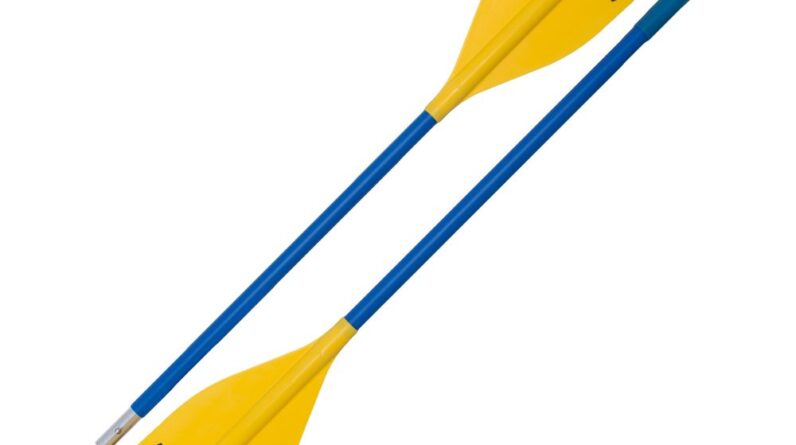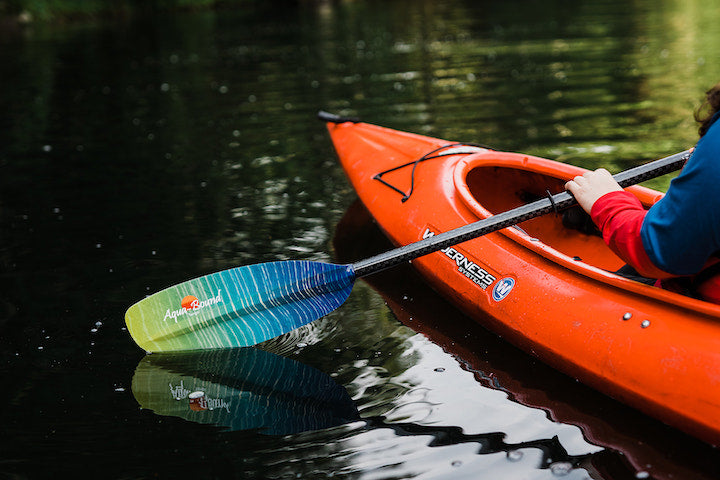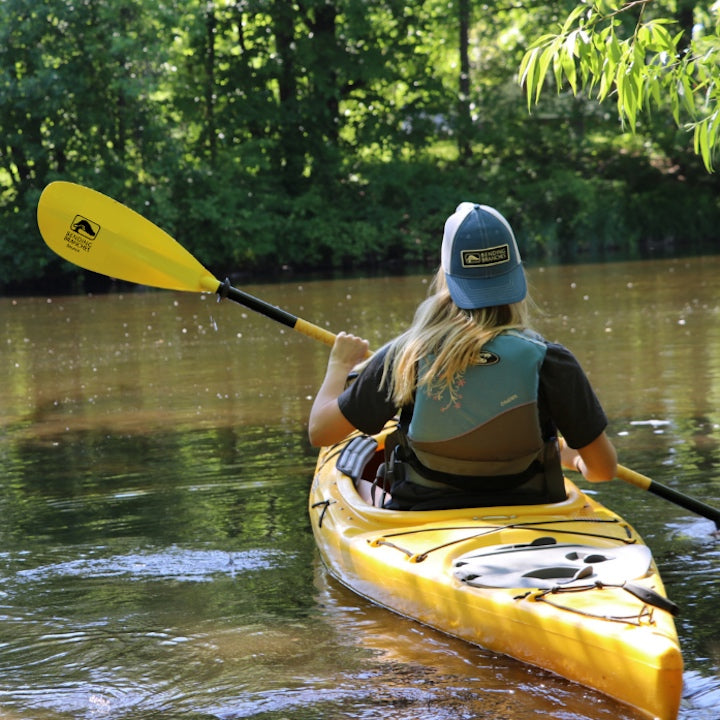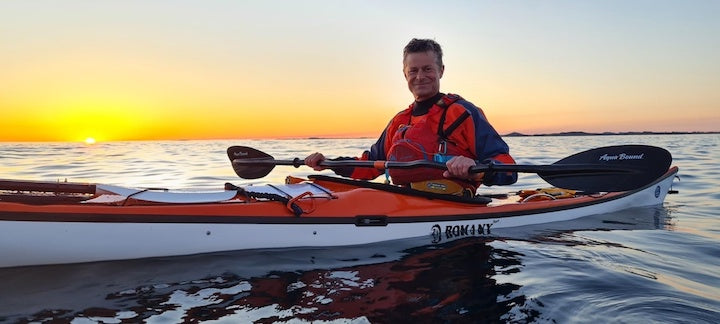
Taking good care of your kayak paddles is essential to ensure they last for many paddling adventures to come. From cleaning to proper storage techniques, this article will provide you with valuable tips and advice on how to maintain and protect your kayak paddles. Whether you’re a seasoned kayaker or new to the sport, these tips will help you keep your paddles in top-notch condition, ready for your next thrilling water excursion.
Cleaning your kayak paddles
Rinsing off saltwater and debris
Keeping your kayak paddles clean is essential for their longevity and performance. After each use, make sure to rinse off any saltwater and debris that may have accumulated on the blades. This can be easily done by using a hose or a bucket of fresh water. By removing saltwater and debris, you prevent corrosive damage to your paddles and ensure they stay in optimal condition.
Using mild soap and water
In addition to rinsing off saltwater and debris, it can be beneficial to give your kayak paddles a gentle cleaning using mild soap and water. Fill a bucket with warm water and add a small amount of mild dish soap. Dip a soft sponge or cloth in the soapy water and gently scrub the shaft and blades of your paddles. This will help remove any stubborn dirt or grime that may have stuck to the paddles. Rinse thoroughly with fresh water after cleaning.
Avoiding abrasive materials
When cleaning your kayak paddles, it’s important to avoid using abrasive materials such as harsh brushes or scrubbers. These can scratch the surface of your paddles, compromising their performance and appearance. Opt for soft sponges or cloths instead, as they are gentle yet effective in removing dirt. By avoiding abrasive materials, you protect the integrity of your paddles and ensure a longer lifespan for them.
Drying your kayak paddles
Air drying
Once your kayak paddles are clean, proper drying is crucial to prevent the growth of mold or mildew. The most natural and convenient way to dry your paddles is by air drying. Simply prop them up in a well-ventilated area, away from direct sunlight. This allows air to circulate around the paddles, promoting efficient drying and preventing any moisture buildup.
Using a towel
If you prefer a faster drying method, you can also use a clean towel to dry your kayak paddles. Gently wipe down the shaft and blades, carefully removing any excess water. Pay extra attention to the joint where the shaft and blade connect, as this area tends to retain moisture. By utilizing a towel, you can speed up the drying process and have your paddles ready for storage sooner.
Avoiding direct sunlight
While it’s important to dry your kayak paddles thoroughly, it’s equally important to avoid exposing them to direct sunlight for prolonged periods. Extended exposure to sunlight can cause the material to degrade and fade, compromising the structural integrity of your paddles. To prevent sun damage, choose a shaded area or use a breathable cover to protect your paddles from harmful UV rays.

This image is property of westerncanoekayak.com.
Disassembling your kayak paddles
Removing the drip rings
To properly care for your kayak paddles, it’s recommended to disassemble them after each use. Begin by removing the drip rings, which are the small plastic rings located on the shaft of your paddles. These rings help prevent water from running down the shaft and into your hands. Gently slide the drip rings off the paddles and set them aside for cleaning or replacement.
Taking apart the shaft
Next, you’ll need to take apart the shaft of your kayak paddles. Most paddles have a two-piece or three-piece design, allowing for easy disassembly. Locate the ferrule, which is the connection point between the shaft sections. Depending on the type of ferrule, you may need to twist, pull, or push a button to release the sections. Once unlocked, carefully separate the shaft sections, taking care not to force them apart.
Separating the blades
After disassembling the shaft, it’s time to separate the blades. Hold the paddle by the shaft, with the blades pointing downward. Gently push or twist the blades to detach them from the shaft. Take care not to apply excessive force, as this can damage the connection between the blades and the shaft. Once the blades are detached, set them aside for cleaning and storage.
Storing your kayak paddles
Choosing an appropriate storage location
Proper storage is essential to keep your kayak paddles in good condition when not in use. Choose a storage location that is dry, well-ventilated, and protected from extreme temperatures. Avoid storing your paddles in areas prone to high humidity, as this can lead to the growth of mold or mildew. A garage, shed, or dedicated paddle storage area are all suitable options for preserving your paddles.
Using a paddle storage rack
To maximize space and minimize the risk of damage, consider investing in a paddle storage rack. These racks provide a secure and organized way to store your kayak paddles. They typically have slots or hooks to hold the paddles in an upright position, preventing them from leaning or falling over. A paddle storage rack not only keeps your paddles safe but also helps maintain their shape and prolong their lifespan.
Avoiding extreme temperatures
Extreme temperatures can have a detrimental impact on the integrity of your kayak paddles. Avoid storing them in areas that are prone to excessive heat or cold, such as near heating vents or in unheated storage spaces. Extreme temperatures can cause the materials to expand or contract, leading to warping or cracking. By storing your paddles in a moderate temperature environment, you ensure their longevity and performance.

This image is property of cdn.shopify.com.
Protecting the shaft and blades
Applying a UV protectant
The shaft and blades of your kayak paddles are exposed to harmful UV rays when used outdoors. Over time, prolonged exposure to UV rays can cause fading, discoloration, and degradation of the materials. To protect your paddles, consider applying a UV protectant specifically designed for kayak paddle use. These protectants create a barrier against UV rays, preventing damage and extending the lifespan of your paddles.
Using paddle blade covers
Another effective way to protect the blades of your kayak paddles is by using blade covers. Blade covers are typically made of durable nylon or neoprene and fit snugly over the blades. They provide an extra layer of protection against scratches, impacts, and environmental elements. Blade covers are especially useful during transport or storage, keeping your paddles safe and pristine.
Wrapping the shaft
To protect the shaft of your kayak paddles, you can wrap them with a soft material such as foam pipe insulation or bubble wrap. Start at the grip end of the shaft and work your way towards the blade end, ensuring a snug fit. Secure the wrapping with tape or adjustable straps, being careful not to overtighten and damage the shaft. By wrapping the shaft, you add an additional layer of cushioning and safeguard against accidental bumps or scratches.
Maintaining paddle grip and seals
Checking and replacing grip tape
The grip tape on your kayak paddle plays a crucial role in providing traction and preventing your hands from slipping during paddling. Regularly check the condition of the grip tape and replace it if it shows signs of wear or damage. Grip tapes can be easily removed and replaced with new ones, which can be purchased from kayak accessory stores. Maintaining a secure and comfortable grip ensures optimal control and efficiency while paddling.
Inspecting and replacing drip rings
Drip rings are an important component of kayak paddles as they help keep water from reaching your hands. Inspect the condition of the drip rings regularly and replace them if they appear cracked, loose, or severely worn. Replacement drip rings can be found at kayak supply stores or online retailers. By ensuring the proper functioning of the drip rings, you enhance your paddling experience and prevent water from interfering with your grip.
Applying lubricant to ferrules
The ferrules, which are the connection points between the shaft sections of your kayak paddles, can benefit from periodic lubrication. Apply a small amount of silicone-based lubricant to the ferrules to ensure smooth and easy assembly and disassembly. Avoid using petroleum-based lubricants, as they can cause damage to the paddle materials. By maintaining well-lubricated ferrules, you prevent excessive wear and maintain the integrity of your paddles.

This image is property of cdn.shopify.com.
Avoiding common paddle storage mistakes
Leaving paddles exposed to the elements
One of the most common storage mistakes is leaving your kayak paddles exposed to the elements. Paddles left outdoors can be susceptible to damage from rain, sun, wind, and other environmental factors. Always store your paddles indoors or in a covered area to protect them from the elements. This simple step goes a long way in preserving the condition and performance of your paddles.
Storing paddles in a bent position
Another mistake to avoid is storing your kayak paddles in a bent position. Leaving your paddles bent for extended periods can result in warping or deforming of the shaft. This can compromise the structural integrity and performance of your paddles. When not in use, always store your paddles in a straight and upright position, either on a storage rack or suspended from hooks.
Neglecting to inspect for damage
Regularly inspecting your kayak paddles for any signs of damage is crucial to catch any issues early on. Small cracks, chips, or dents may not be immediately noticeable, but they can worsen over time and affect the performance of your paddles. Take the time to closely examine your paddles before and after each use. If you notice any damage, consult with a professional or replace the affected parts to ensure safe and optimal paddling.
Transportation considerations
Securing your paddles during transport
When transporting your kayak paddles, it’s important to secure them properly to prevent damage. If your vehicle has roof racks or a dedicated paddle mount, secure the paddles tightly using straps or bungee cords. Be mindful of any movement or vibration during transportation and adjust the straps as needed. If you don’t have roof racks or a designated mount, place the paddles securely inside your vehicle, making sure they won’t shift or slide during transit.
Protecting paddles with a travel bag
Investing in a travel bag specifically designed for kayak paddle storage can provide an extra layer of protection during transportation. These bags are typically padded and have separate compartments to prevent blades from scratching against each other. Additionally, travel bags with handles or carrying straps make it convenient to transport your paddles to and from various locations. Choose a bag that fits your paddles snugly and offers adequate cushioning.
Avoiding excessive pressure or weight
During transportation, it’s crucial to avoid subjecting your kayak paddles to excessive pressure or weight. Avoid placing heavy objects on top of your paddles, as this can cause bending or breaking of the shafts or blades. Additionally, be cautious when loading or unloading your kayak, ensuring that the paddles are not crushed or pressed against other objects. By handling your paddles with care during transportation, you minimize the risk of damage.

This image is property of media.wired2fish.com.
Proper paddle storage duration
Short-term storage
For short periods of non-use, such as between paddling trips, the cleaning and storage procedures mentioned earlier are sufficient. By rinsing off and drying your kayak paddles properly, you ensure they stay clean, dry, and ready for your next adventure. It’s still important to store them in an appropriate location, away from extreme temperatures and protected from potential damage.
Long-term storage
If you plan on storing your kayak paddles for an extended period, there are additional steps you should take to ensure their longevity. Before storing, clean and dry your paddles thoroughly. Apply a protective coating or wax made specifically for kayak paddle maintenance to the shaft and blades to prevent moisture damage. Store your paddles in a padded bag or wrap them in soft material for added protection. Periodically check on your stored paddles to ensure they remain in good condition.
Preparing for seasonal storage
If you live in an area with distinct seasons and plan to store your kayak paddles during the off-season, it’s important to take extra precautions. Clean and dry your paddles thoroughly, paying special attention to removing any saltwater residue. Apply a UV protectant to shield your paddles from sun damage during months of inactivity. Store your paddles in a climate-controlled environment to prevent extreme temperature fluctuations. By properly preparing your paddles for seasonal storage, you ensure they are ready for your next paddling season.
Choosing the right kayak paddle
Understanding paddle materials
When choosing a kayak paddle, it’s essential to consider the materials used in its construction. The two primary materials for kayak paddle shafts are aluminum and fiberglass. Aluminum shafts are durable and resistant to corrosion, making them a popular choice for recreational paddling. Fiberglass shafts, on the other hand, offer a lighter weight and increased flexibility, making them ideal for longer paddling trips. Blade materials can vary and may include materials such as plastic, fiberglass, or carbon fiber, each offering different strengths and characteristics.
Considering blade shape and size
The shape and size of the paddle blades also play a crucial role in determining your paddling experience. Wider and shorter blades provide increased power and are suitable for activities that require more force, such as whitewater kayaking. Narrower and longer blades offer improved efficiency and are ideal for flatwater or touring kayaking. Additionally, paddle blades can have a dihedral or flat shape, each providing different levels of stability and maneuverability. Consider your paddling style and preferences when choosing the appropriate blade shape and size for your kayak paddle.
Determining the appropriate length
Selecting the right length for your kayak paddle is crucial for optimal performance and comfort. The length of your paddle is determined by factors such as your height, kayak width, and paddling style. A general guideline for choosing paddle length is to hold the paddle upright with one hand on the grip and the other hand on the throat of the paddle. Your elbows should have a slight bend, indicating a proper length. Additionally, consider the type of kayaking you will be doing, as different activities may require slightly shorter or longer paddle lengths. Experimenting with different lengths can help you find the perfect fit for your paddling needs.
By following these tips for properly caring for and storing your kayak paddles, you ensure they remain in excellent condition and provide reliable performance for years to come. Remember to clean and dry your paddles after each use, disassemble them for storage, and protect them from harmful elements. Regularly inspect and maintain your paddle grip and seals, and transport them securely to prevent damage. With proper care and storage, your kayak paddles will be ready to accompany you on countless adventures on the water. Happy paddling!

This image is property of cdn.shopify.com.





